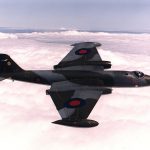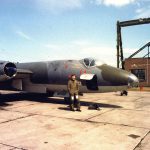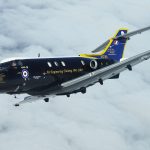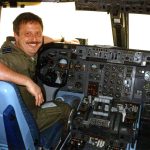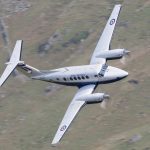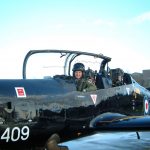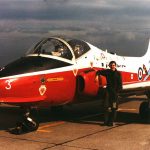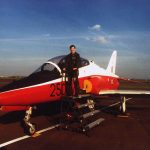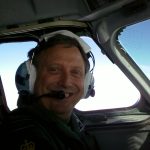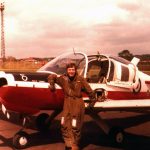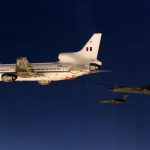IRT Debrief Digest – Capt Steve Oddy – September 2023
RNP Approaches – General
- Pre-approach Checks. Once the approach (or a STAR or SID) has been loaded, a check of tracks, altitudes and distances needs to be made between the plate being used and the data displayed on the G1000/430 flight plan.
- Checks During the Approach. During the approach the correct sequencing of GNSS modes needs to be seen – TERM to LNAV (or LPV etc) to SUSP. Not all applicants have understood how the GNSS behaves during the missed approach.
- CDI Modes. Applicants should know the horizontal accuracy (ie full scale deflection) of all the relevant modes: ENR, TERM, APPR, LNAV, LPV (not available in the UK), L/VNAV.
Tight Approaches.
Controllers are human too and sometimes get it wrong. We expect applicants to be aware that they are getting close to the glidepath before localiser intercept and to do something about it. There are many different solutions and different scenarios but a few things to bear in mind are:
- Glidepaths do not have to be intercepted from below if you have distance information available to allow you to confirm that you’ve found the correct glidepath.
- You can ask the controller for further descent to allow you to get below the glidepath, although you then need to descend at a greater angle than the glidepath to make this worthwhile.
- You can ask the controller to increase the cut you’ve been given by, say, 10°.
- If excess speed or low ROD is a problem then 10° flap can be selected early, as can the gear (within the limiting speed!)
If all else fails, an early decision to ask for repositioning will not necessarily penalise the applicant.
Wind Change with Altitude.
Applicants often set the expected drift for an ILS approach based on the surface wind and are then surprised when they experience different conditions at the start of the ILS. They must remember that, at 2000 ft the wind may have veered some 30° or so and increased. Controllers at RAF airfields will give pilots the 2000 ft wind on request.
G1000 Auto-Ident.
Sometimes the G1000 auto-ident facility doesn’t work because the station ident volume is too low. It is usually still possible to ident aurally using the ‘NAV1’ button. The consequence of the lack of auto-ident may be that, when using an ILS, the CDI pointer doesn’t slave to the QDM. Some applicants are unaware that you can move it manually!
ILS Failure.
Although it is not a ‘test item’, applicants should be aware of the procedures required if, say, the ILS fails during the approach. We would expect an applicant faced with an equipment failure to initiate the correct drills (ie go around or convert to localiser approach) and then discuss options with the examiner. To minimise the risk of equipment failure, best practice would be to tune both NAV 1 and NAV 2 to the ILS unless a VOR were needed during the initial missed approach procedure.
Glidepath Monitoring.
Applicants must monitor the relationship between glidepath and distance and also need to consider the implications of an ILS where the DME is u/s. They must be prepared to ask radar for range information during the approach and relate this to glidepath progress. Note, at some non-UK airfields the DME will not necessarily read zero at touchdown.
Decision Altitude.
Some applicants are adding 50ft or more to DA (in addition to the Pressure Error Correction) in the mistaken belief that they must not go below DA during the go around. We expect applicants to initiate go around at the published DA plus the PEC for the aeroplane and any applicable temperature error correction.
Whilst there is a notional 50ft tolerance on DA stated in Standards Document 1, this is there for use at the examiner’s discretion and should not be applied as a matter of course.
Go-arounds from above DA can be a fail item, especially if the examiner perceives that the go around has been initiated in order to avoid exceeding glidepath or azimuth tracking limits.
Go Around.
Applicants are still allowing the nose to drop during the symmetric go around thereby levelling off or even descending. This error is so potentially dangerous that it will generate an immediate fail for the approach just flown.
Turning Go-Arounds.
At Birmingham the controllers are keen that we should clear their centreline as soon as possible and so give go around instructions such as “turn left onto 240° and climb to 2500 ft”; this can also happen at Bristol and Bournemouth. We need to fit our engine failure into this and so, rather than initiating it before the turn, we will often wait until the turn is complete as long as we have been cleared to a sufficient altitude.
Some applicants have been ‘helpful’ and started this turn at about 300 ft aal, which can give the examiner an unexpected view of the terminal buildings! Whilst we need a prompt turn, turns should never be started below 500 ft aal; some airfields require 1000ft or the upwind end of the runway before turning – applicants need to be familiar with the AIP entries for the airfields they are using. Whether the engine failure occurs before or after the turn, any turn should only be started when it is safe and sensible to do so.
Especially at East Midlands and Cardiff, the applicant should announce the intention to depart asymmetric when giving training requirements before the approach.
Go-Arounds into the Visual Circuit.
Because of the problems of removing screens/hood at DA and the proximity of ACA, an asymmetric ILS is likely to lead to an asymmetric go around on instruments. The technique for such a go around may be significantly different from that for a visual asymmetric go around given the different speeds and flap settings. If a visual circuit is then to be flown the examiner will remove the screens/hood once the aircraft is climbing safely and re-orientate the applicant as necessary before they turn downwind.

